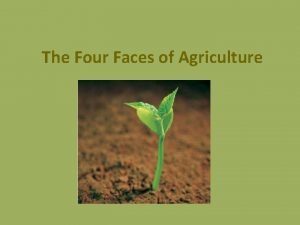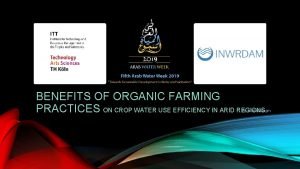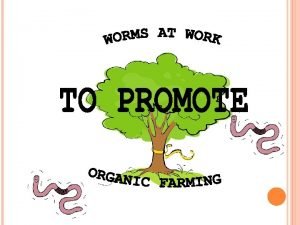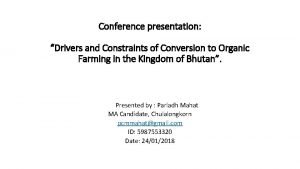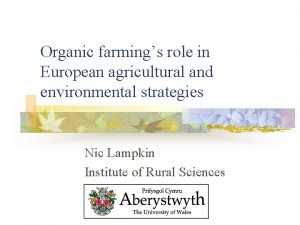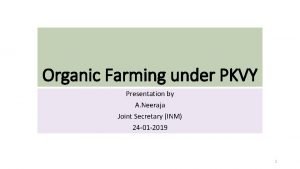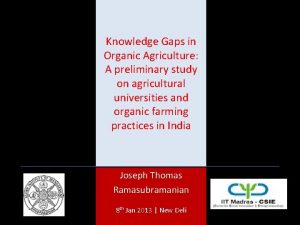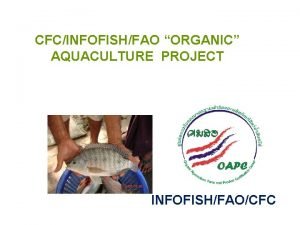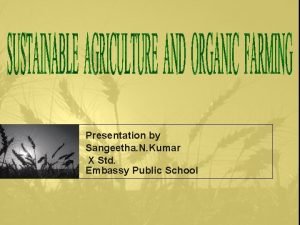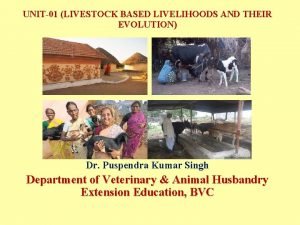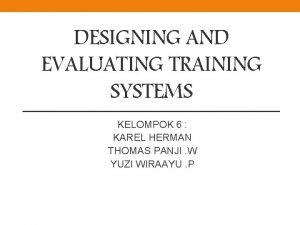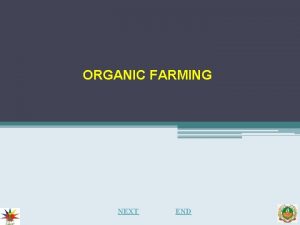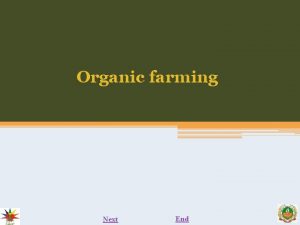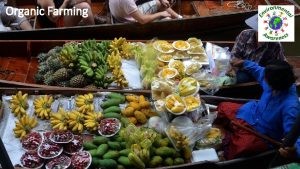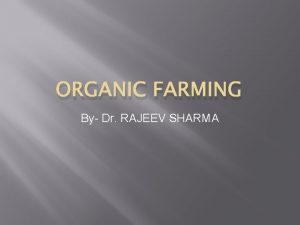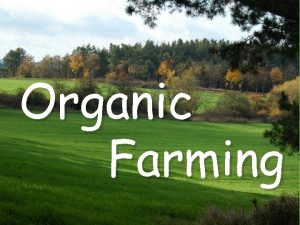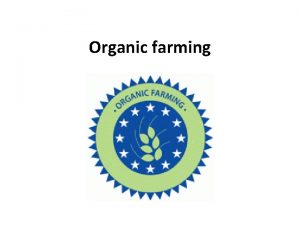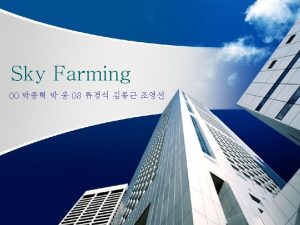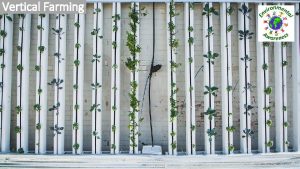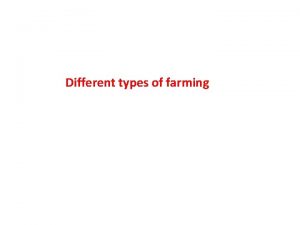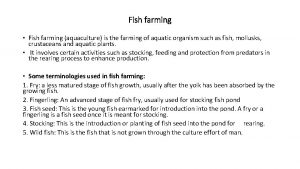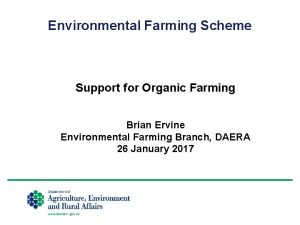Evaluating inputs for organic farming a new system














- Slides: 14

Evaluating inputs for organic farming – a new system Case study: Spinosad Bernhard Kromp bernhard. kromp@univie. ac. at Ludwig Boltzmann Institute for Biological Agriculture

Contents • The spinosad working group • Brief specifications of spinosad • The testrun process: “applicant” vs. “evaluators” agreements & differences • Conclusions of the “evaluation” testrun: key issues in favour or causing concern • Experiences from using the matrix • Final (preliminary) recommendation & open questions Ludwig Boltzmann Institute for Biological Agriculture

The Working Group Spinosad • Why spinosad? – PPP of microbial origin (“bio-pesticide”) – Widely used in conventional farming – Allowed already for OF in a few countries • Composition and „roles” of the WG: – 1 “applicant”, 2 “MS evaluators”, 2 “external experts”, 1 “EU panel expert” • Mode of action: – Earlier testruns -> installment of the WG -> “application” -> “MS evaluation + external experts´ comments” -> compilation & final evaluation – key issues + recommendation Ludwig Boltzmann Institute for Biological Agriculture

Spinosad: brief specifications 1 • Name: Spinosad • Origin: fermentation product of the actinomycete soil bacterium Saccharopolyspora spinosa • Active ingredient: spinosyns (= bacterial toxins) • Manufacturing process: for economically feasible industrial fermentation, chemical mutants of S. spinosa are used; aerobic fermentation process in aqueous growth media (containing e. g. corn solids, soja bean flour, cottonseed flavour); extraction & recrystallization of techn. spinosad • Composition: mixture of spinosyn A and spinosyn D (85 : 15), up to 10 % residues from fermentation broth Ludwig Boltzmann Institute for Biological Agriculture

Spinosad: brief specifications 2 • Mode of action: – Toxic on nervous system of insects • Use: – insecticide against caterpillars, leaf miners, thrips etc. in various fruit vegetables, field crops, fruits, ornamental plants etc. • Necessity in OF: examples – – against thrips in leaks (no alternatives) sucking insects on bell peppers apple codling moth (alternatively to granulose virus) leaf-mining diptera (no alternatives available) Ludwig Boltzmann Institute for Biological Agriculture

Spinosad: brief specifications 3 • Approval in EU: currently approved in conventional farming under 91/414/EC in 14 EU and many (> 50) non-EU countries (e. g. Tracer, Success, Conserve, Spintor, . . . ) • Organic farming standards: allowed for OF in CH, US, Argentina; fulfils inclusion criteria („. . . microbial origin. . . “) of IFOAM Basic Standards and Codex Alimentarius • Application: spraying above ground on all plant parts (depends on crops) Ludwig Boltzmann Institute for Biological Agriculture

“Applicant” versus “Evaluator” 1: agreement in scorings of “use & necessity” and “human health” Applicant statement Score Evaluators´statements Score Spinosad has a safer toxicological profile than e. g. rotenone and pyrethrins 1 No alternatives available for some key pests. Spinosad more selective than rotenone and pyrethrins 1 -2 Efficacious against many insect pest in agriculture and horticulture 2 Spinosad is highly necessary for many uses (highly effective and cost-efficient, often no alternatives) 2 Spinosad may help to reduce resistance development against other insecticides currently used in OF 1 May help to reduce the likelihood of resistance 1 Low risk product with no adverse effects on humans 0 -2 No concerns about human health 0 -2 Ludwig Boltzmann Institute for Biological Agriculture

“Applicant” versus “Evaluator” 2: different scorings in “environmental impacts” Applicant statement Score Evaluators´statements Score Spinosad: toxicity to aquatic invertebrates and honeybees, can be mitigated by risk management practices 0 Concerns about impact on beneficial parasitoids and pollinators -1 Rapid photo-degradation of 0 spinosad (half-life < 1 - few days) exposed to sunlight Concerns about -1 persistence of spinosad in water (half-life 200 days) in the absence of sunlight Microbial breakdown in the soil, low toxicity to earthworms Concerns about longer half -1 -lives of metabolites and low mobility in the soil 0 Ludwig Boltzmann Institute for Biological Agriculture

Side-effects are acknowledged. . . TRACER* DANGEROUS FOR THE ENVIRONMENT VERY TOXIC TO AQUATIC ORGANISMS, MAY CAUSE LONGTERM ADVERSE EFFECTS IN THE AQUATIC ENVIRONMENT. THIS MATERIAL AND ITS CONTAINER MUST BE DISPOSED OF IN A SAFE WAY. USE APPROPRIATE CONTAINMENT TO AVOID ENVIRONMENTAL CONTAMINATION. To avoid risks to man and the environment, comply with the instructions for use. Ludwig Boltzmann Institute for Biological Agriculture

…. . and avoided by proper instructions SAFETY PRECAUTIONS LERAP B and Broadcast Air Assisted LERAP P Environmental protection: To protect aquatic organisms respect a buffer zone [refer to section on LERAP for buffer zone width] to surface water bodies. DO NOT ALLOW DIRECT SPRAY from broadcast air-assisted sprayers to fall within 40 metres of the top of the bank of a static or flowing waterbody, unless a Local Environmental Risk Assessment for Pesticides (LERAP) permits a narrower buffer zone, or within 5 metres of the top of a ditch which is dry at the time of application. Aim spray away from water. DO NOT ALLOW DIRECT SPRAY from horizontal boom sprayers to fall within 5 metres of the top of the bank of a static or flowing water body, or within 1 metre of the top of a ditch which is dry at the time of application. Aim spray away from water. This product qualifies for inclusion within the Local Environmental Risk Assessment for Pesticides (LERAP) scheme. Before each spraying operation from a horizontal boom sprayer or broadcast air-assisted sprayer, either a LERAP must be carried out in accordance with PSD’s published guidance or the statutory buffer zone must be maintained. The results of the LERAP must be recorded and kept available for three years. DO NOT CONTAMINATE WATER with the product or its container. Ludwig Boltzmann Institute for Biological Agriculture

Conclusions Key issues in favour • origin is compliable with OF standards • economically necessary for certain high value crops Key issues causing concern • some environmental side-effects • public perception of spinosad as a “conventional” PPP Ludwig Boltzmann Institute for Biological Agriculture

Experiences using the matrix for spinosad Difficult to score: – when few or contradictory information is available (e. g. for some of the environmental impacts) – when only “soft” facts are available, especially in public perception (e. g. question of “conventional PPP”, question of possible GMO residues from fermentation broth) Ludwig Boltzmann Institute for Biological Agriculture

Final (preliminary) recommendation • Inclusion of spinosad in Annex II B with restriction • Proposed restriction: „Need recognized by the inspection body or inspection authority“ Ludwig Boltzmann Institute for Biological Agriculture

Open questions to the audience • How should the scoring distinguish between environmental/health hazards (potential risk) and the actual risks (taking into account restrictions on use)? • How to define additional restrictions in OF in Annex II (e. g. for certain crops)? Ludwig Boltzmann Institute for Biological Agriculture
 Organic farming pros and cons
Organic farming pros and cons Conclusion for organic farming
Conclusion for organic farming Conclusion of organic farming
Conclusion of organic farming Nsb systems amway
Nsb systems amway Objectives of organic farming
Objectives of organic farming Organic farming
Organic farming Challenges of organic farming
Challenges of organic farming Florida organic aquaculture
Florida organic aquaculture Advantages of organic farming
Advantages of organic farming Principles of organic farming
Principles of organic farming Subsistence farming 13 colonies
Subsistence farming 13 colonies System design input and output
System design input and output Concept of farming system
Concept of farming system Designing and evaluating training system
Designing and evaluating training system Kontinuitetshantering
Kontinuitetshantering
